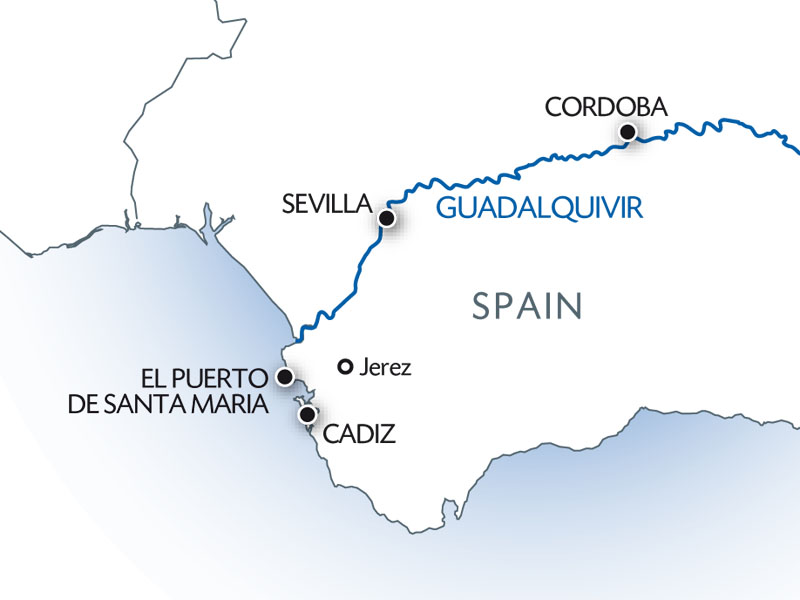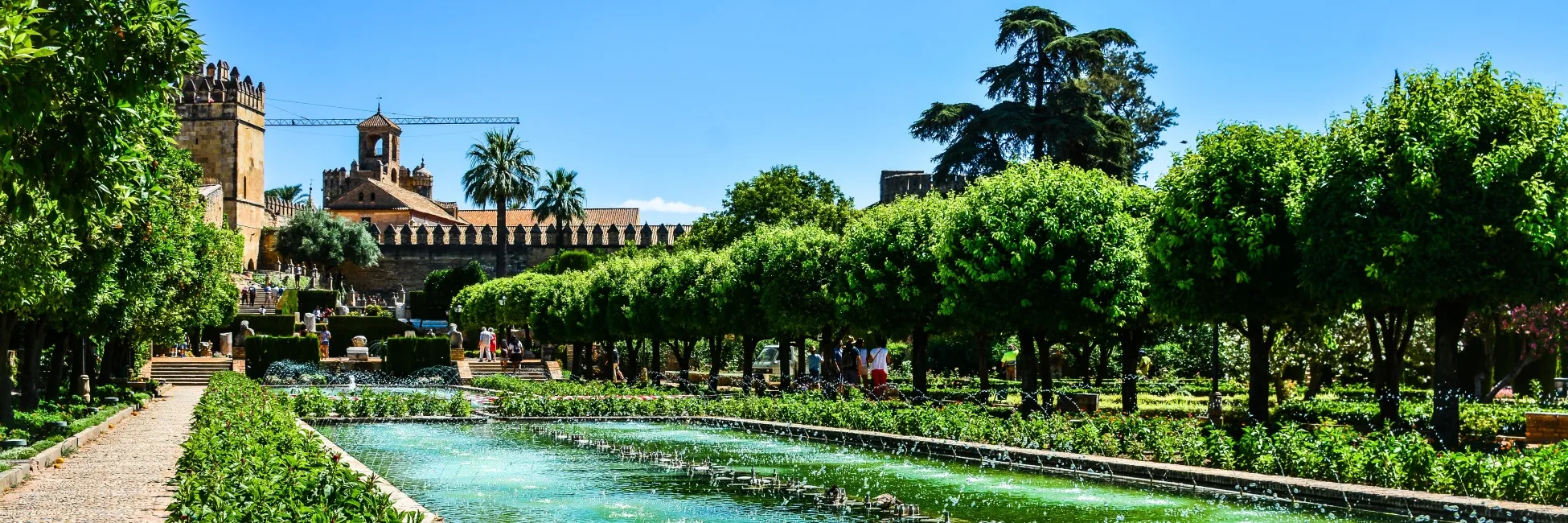
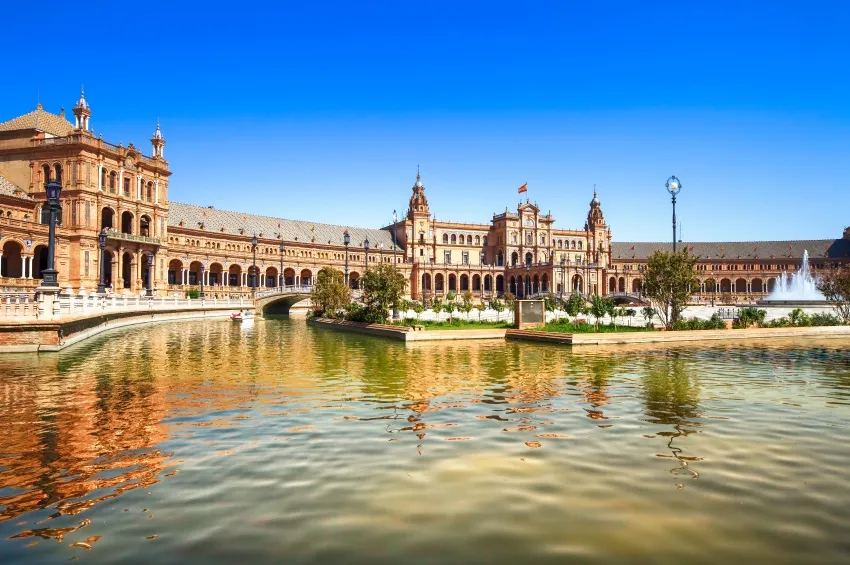
Transfer by coach to Seville. We'll start off our visit with the azulejos that adorn the Plaza de España which was constructed for the Ibero-American Exposition of 1929. The 200 meter diameter hemicycle symbolizes Spain welcoming its former colonies. It faces in the direction of Guadalquivir and represents the path to the Atlantic Ocean and America. There is only one building going all along its rounded side. A fountain designed by Vicente Traver, a Valencian architect, stands in the center. Also lying between the center and the palace are four bridges spanning four canals in half circles, representing the four former Spanish Queens. We'll move on with a stroll through the typically Sevillian patios garnished with flowers in the charming Santa Cruz district. Sheltered behind the former perimeter wall, what used to be the Jewish district belongs to the historic heart of the city and is surrounded by the most famous buildings of the Andalusian capital. The district, which dates back to the Middle Ages, is a center of art and history that brims with legends, churches and palaces, witnesses to its past. It was greatly enhanced at the beginning of the 20th century and stands today as one of the most emblematic quarters of Seville. It's mostly reputed for its enchanting steep alleys and shaded squares. Afterwards, we'll discover the Alcazar*, one of the oldest Royal Palaces in Europe and the King's residence. A Moorish house and a fortress, the Alcazaba (former Arab district) is a gorgeous witness of the mudéjar style with a combination of Moorish techniques and Christian symbols. The visit will end with Seville's cathedral, providing one of the last testimonies to the Gothic style. This structure was built over the ruins of an Almohad mosque as a symbol of the capital's prosperous status of great commercial town after the Reconquista. We'll return on board at the end of the morning.
PLEASE NOTE
- Entrance to the Alcazar and the cathedral is included.
- Good walking shoes are recommended: visits by coach and on foot.
- Please dress appropriately for the visit of the cathedral.
- *Except on Sunday afternoons and Mondays: visit of the Pilate Palace.
- The order of the visits can change.
- Times are approximate.

Transfer by coach to Seville. We'll start off our visit with the azulejos that adorn the Plaza de España which was constructed for the Ibero-American Exposition of 1929. The 200 meter diameter hemicycle symbolizes Spain welcoming its former colonies. It faces in the direction of Guadalquivir and represents the path to the Atlantic Ocean and America. There is only one building going all along its rounded side. A fountain designed by Vicente Traver, a Valencian architect, stands in the center. Also lying between the center and the palace are four bridges spanning four canals in half circles, representing the four former Spanish Queens. We'll move on with a stroll through the typically Sevillian patios garnished with flowers in the charming Santa Cruz district. Sheltered behind the former perimeter wall, what used to be the Jewish district belongs to the historic heart of the city and is surrounded by the most famous buildings of the Andalusian capital. The district, which dates back to the Middle Ages, is a center of art and history that brims with legends, churches and palaces, witnesses to its past. It was greatly enhanced at the beginning of the 20th century and stands today as one of the most emblematic quarters of Seville. It's mostly reputed for its enchanting steep alleys and shaded squares. Afterwards, we'll discover the Alcazar*, one of the oldest Royal Palaces in Europe and the King's residence. A Moorish house and a fortress, the Alcazaba (former Arab district) is a gorgeous witness of the mudéjar style with a combination of Moorish techniques and Christian symbols. The visit will end with Seville's cathedral, providing one of the last testimonies to the Gothic style. This structure was built over the ruins of an Almohad mosque as a symbol of the capital's prosperous status of great commercial town after the Reconquista. We'll return on board at the end of the morning.
PLEASE NOTE
- Entrance to the Alcazar and the cathedral is included.
- Good walking shoes are recommended: visits by coach and on foot.
- Please dress appropriately for the visit of the cathedral.
- *Except on Sunday afternoons and Mondays: visit of the Pilate Palace.
- The order of the visits can change.
- Times are approximate.
Cruises
This shore excursion is available for one or several cruises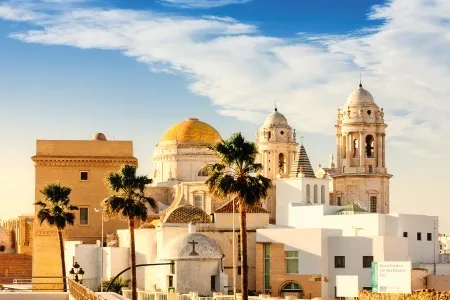
The Jamón Ibérico Route and the Pueblos Blancos - Amazing Andalusia: Enchanting Traditional Architecture and Fabulous Cuisine (port-to-port cruise)
Seville - Jerez de la Frontera - The Pueblos Blancos - Jerez de la Frontera - Jamón Ibérico Route - SEVILLE - CADIZ - EL PUERTO DE SANTA MARIA - ISLA MINIMA - SEVILLE
Discover Spanish culinary culture on a trip through the Jabugo region, where one of the most famous hams in the world is produced. Learn about how pigs are raised and the long curing process involved in making this delicacy. After this scrumptious jaunt, we'll complete our picture-perfect postcard day with a visit to the Pueblos Blancos, a myriad of villages dotted with whitewashed homes. The contrast of colors between the homes, mountains, and flowers within the idyllic landscape is something to behold. A cruise will then give you a glimpse of Andalusian culture enhanced by tasting local products.
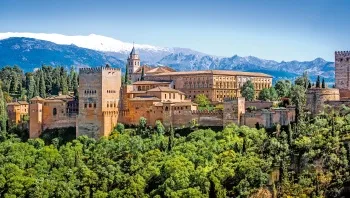
Discover Andalusia in Seville, Follow the Footsteps of Columbus in Huelva, and Fall Under the Spell of Cádiz (port-to-port cruise)
SEVILLE - Cordoba - SEVILLE - ISLA MINIMA - EL PUERTO DE SANTA MARIA(2) - Jerez - CADIZ - HUELVA - SEVILLE - Granada - SEVILLE
Travel to the heart of Andalusia. Along the Guadalquivir discover the town of Cordoba, which combines perfectly history and modernity. Visit Seville and its Alcázar palace, an astonishing mix of architectural styles. Then be carried away by the sublime city of Granada which offers a multitude of magnificent sites to visit. You will be dazzled by the beauty of its cathedral which houses the tomb of Christopher Columbus.

Amazing Andalusia: Enchanting Villages, Traditional Architecture, and Fabulous Cuisine (port-to-port cruise)
SEVILLE - CADIZ - EL PUERTO DE SANTA MARIA - ISLA MINIMA - SEVILLE
Seville—an exemplary city in Spanish history, where Christian and Muslim cultures have cohabited in veritable peace in the past—contains impressive architectural wonders such as the Palacio de las Dueñas. A captivating tour of the Pueblos Blancos in Andalusia. Vejer de la Frontera, a hilltop town with whitewashed homes, and the contrast of the blue water and white facades in Conil de la Frontera.
A glimpse of Andalusian culture enhanced by a tasting of local products.
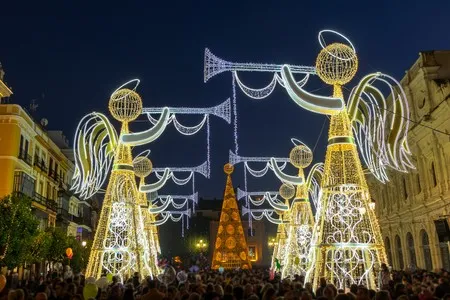
The Soul of Christmas in Andalusia: Cruise to the Heart of the Nativity and Festive Celebrations (port-to-port cruise)
SEVILLE - CADIZ - EL PUERTO DE SANTA MARIA - SEVILLE
Experience the magic of Christmas in Andalusia and discover its history through its festive traditions. The Nativity scenes of Seville highlight the local craftsmanship, with meticulously sculpted figurines and majestic decorations full of details. The enchantment of Spanish Christmas customs lies in the sharing and conviviality of festive moments, elevated by local gastronomy, songs, and the beauty of Christmas decorations. A landmark city in Spanish history, Seville, where Christian and Muslim cultures thrived together, inherits from its rich past architectural treasures, notably the Palacio de Las Dueñas.


